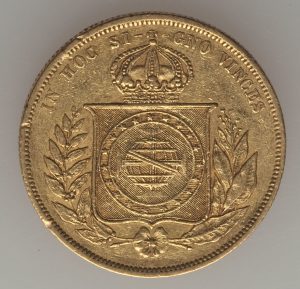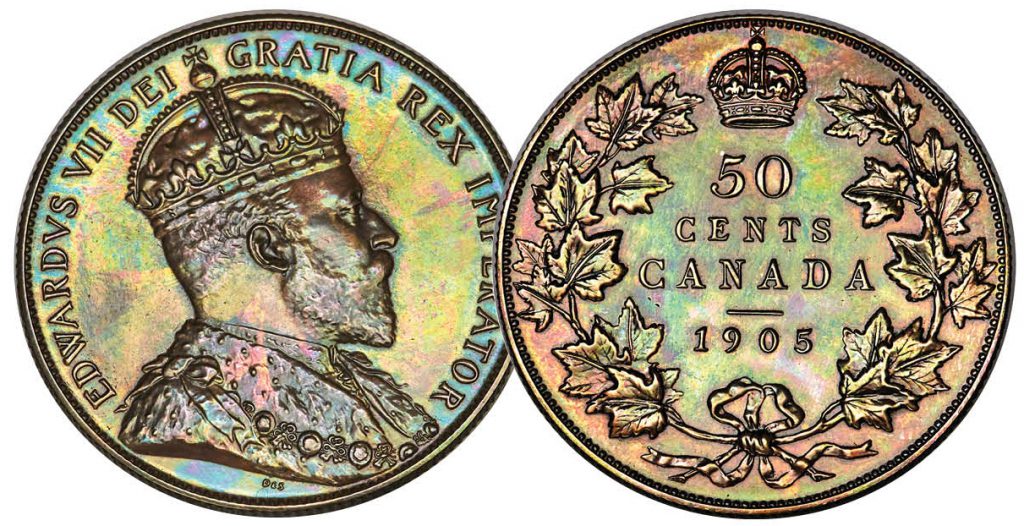By Jesse Robitaille
When hunting for coins for their collections – especially those in lower-than-Mint-State condition – collectors are forced to wade through seemingly countless examples to find “the right one.”
The prevailing wisdom is for collectors to collect the highest-graded examples they can afford, and judging by the major sales of recent years, that advice is being heeded. The 2019 sale of the “Cornerstone” and George Cook collections realized more than $7 million altogether; the 2018 sale of the Doug Robins Collection brought more than $1 million; and the 2015 Canadian Legacy Sale II exceeded $4 million.
For at least half a decade, collectors’ desires for rare and high-quality coins have remained consistent; however, the market for these rarities – the ones near or at the top of the condition census – is by its very nature sparse. What’s more, unique or solo highest-graded coins are vastly more expensive than their lower-graded counterparts.
The key-date 1948 silver dollar, for example, carries a Trends valuation of $17,500 in Mint State-65. This number drops to $1,700 in About Uncirculated-50 and $1,100 in Fine-12, and it’s a similar story across the range of Canadian numismatics.
Because of the market’s nature, a collector looking to fill a hole in their collection is forced to scour dealer listings, auction catalogues and online offerings for more average examples. And the market is not without its pitfalls.
While the ideal highest-graded coin will be free of abrasions, blemishes, dents, scratches or any other imperfections that negatively affect eye-appeal, quality and overall value, these “coin problems” begin presenting themselves in the lower grades.
It’s up to the knowledgable, well-informed collector to understand these potential problems and determine how they might affect a coin’s worth and desirability (as well as its impression on you).

Also from the Cook Collection, a 1973-dated 25-cent ‘Large Bust’ variety was re-certified as Uncirculated Details with a ‘scratch’ designation. Featuring the tell-tale ‘hairline’ scratches from prior cleaning, it sold for $89 (compared to a Trends valuation of $215 for an example graded About Uncirculated-50).
COMMON COIN PROBLEMS
Common problems a collector might find on coins in the Very Good through About Uncirculated range include cleaning, polishing, rim dents, scratches and corrosion.
A cleaned coin is “usually lighter in colour with light-to-severe hairline scratches,” said dealer Kirk Parsons, co-owner of Kitchener, Ont.’s Colonial Acres.
“Take a coin, hold it under good lighting and look at the surfaces at different angles. A few minor lines will be present on lower grades, and that is acceptable; however, a bunch of lines in the same direction, and sometimes in many directions, is a sign of abrasive cleaning to the coin.”
Cleaning can be disastrous to a coin’s value as evidenced with the sale of the George Cook Collection last August. Of the 439 lots, most of which were certified by Professional Coin Grading Service (PCGS), about 30 were re-certified with either “cleaned,” “repaired,” “altered surfaces,” “surfaces smoothed” or “questionable colour” designations and given no numerical grade.
A 1905 specimen half-dollar (Lot 31299) re-certified as PCGS Uncirculated Details with an “altered surfaces” designation brought $3,360 US (about $4,475 Cdn.) – just six per cent of the $50,000 the collector originally paid for it before cleaning.

An 1836 Bank of Montréal ‘bouquet sou’ token graded ‘AU Details’ with an ‘environmental damage’ designation by Numismatic Guaranty Corporation sold for $72 (including buyer’s premium) at a 2014 auction.
Another problem for collectors is polished coins.
“If the coin is not Mint State and has extremely reflective surfaces, it may be polished,” said Parsons, who added this is “usually noticed right away” by the person holding the coin.
These reflective surfaces contrast most collectors’ actual desires, which are for the attractive tints of a well-toned coin with noticeable eye-appeal.
Consider the lot description for the 1921 half-dollar – the iconic rarity known as the “King of Canadian Coins” – that hammered down for $220,000 during the Canadian Legacy Sale II.
“At first glance the toning of this historic coin evokes hues of lavender-grey, but a deeper look will reveal that this is overlaid on subtle shades of straw gold, with tiny flecks of charcoal grey nestled among the legend and reverse leaves. A scant tilt causes the deep original lustre to flash across the frosty surfaces, a striking compliment to the crisp, well-struck designs. Further examination with a loupe will yield little of note; a single blemish, not unlike a short brush-stroke, extends out from the king’s eye in the direction of the word ‘DEI’. The remainder of the fields remain astoundingly immaculate, perfectly preserved for over 90 years.”
It was graded Gem Uncirculated-65 by International Coin Certification Service.
The same coin in Extremely Fine-40 has a Trends valuation of $80,000.

The reverse (shown) of an 1867 Pedro II 10,000-reis gold coin features several rim dents, the most severe of which is located near the bottom-left side. Described as Very Fine, it sold at a 2018 auction for $360 (including buyer’s premium).
DENTS, SCRATCHES & CORROSION
Lower-grade coins might also contain one or more rim dents
“Coins often pick up small dents as they circulate, and this is normal; however, look for major dents along the rims as this will devalue the premium of the coin,” said Parsons.
Similarly, scratches – even seemingly small ones – will detract from a coin’s value.
“Look for any substantial scratches that stand out that are more than two to three millimetres in length,” said Parsons. “Small contact marks are accepted among grade points.”
Scratches are often caused by the improper removal of a coin from the common “two-by-two” holders, which use staples to hold the cardboard and plastic window together.
“Always remove coins from the plastic window and do not spread open and remove from the side of a two-by-two unless you have removed the staples,” Parsons added.
Lastly, corrosion from environmental contamination will attack the surface of a coin and sometimes cause pitting or green oxidation.
“A common issue on silver coins is improper ‘dipping’ of a coin that leaves spots where the chemical was not properly removed, allowing the reaction to continue causing black tarnish spots and eventually pitting,” said Parsons.
“If you are thinking of dipping a silver coin to remove tarnish, consult with a coin expert first.”


1 Comment
I find that to spot silver that’s been DIPPED or cleaned with a silver cleaner take your fob at least 5x and check the rims around the coin. You will usually find dirt or tarnish in the crevices.